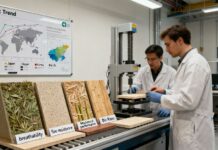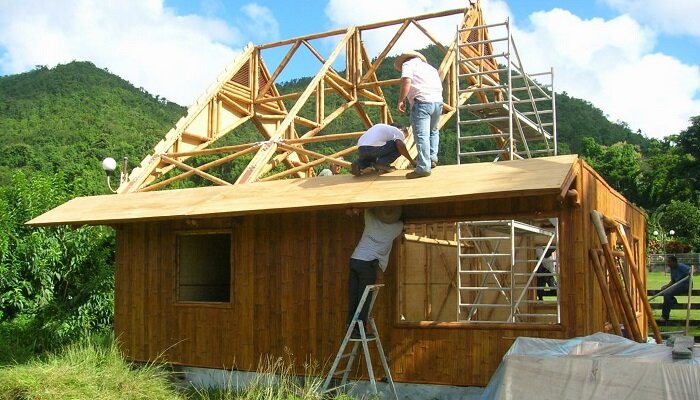A recently released study in the journal Construction and Building Materials introduces an accurate model for prediction for an easy-to-understand method utilised by bamboo, a frequently used material in wooden structures. The proposed model aims to ensure both security and effectiveness.
Once bamboo has been standardised, it can be meticulously incorporated into construction practices.
Bamboo possesses environmentally friendly traits as it has the ability to absorb carbon at an increased rate in contrast to other kinds of wood.
According to Dominika Malkowska, a researcher from Bristol’s School of Civil, Aerospace, and Design Engineering, bamboo has the ability to battle climate change by efficiently taking in carbon dioxide from the environment. Wood also has this potential, but it calls for 30 years for maturation before it can be harvested. On the other hand, bamboo requires just 4 to 5 years to reach maturity. Therefore, if bamboo is used instead of timber, one can sequester carbon at a significantly faster pace.
Plantation trials are currently underway across the southern regions of Europe to determine which species can thrive in that specific climate. If these trials prove effective, bamboo could potentially be used as a construction material for residences in the UK in the not-too-distant future. Companies are currently constructing bamboo houses in various regions around the world, such as the Philippines. This research is poised to be immediately implemented in such areas.
Dominika went on to conduct more than 200 experimental tests, examining different combinations of parameters associated with the connection. These parameters included count, screw material, spacing, screw diameter, bamboo wall thickness, as well as steel plate thickness.
She explained that the most interesting discovery is that screws are actually suitable links for bamboo. Contrary to widespread belief, they do not cause splitting, as long as the link is well designed. The bamboo pole connection method offers multiple advantages compared to the traditional bolted connection using cement mortar infill. These benefits include an eventually lower carbon footprint, convenient breakdown on site, and improved rigidity and ductility, among others.
Bamboo is susceptible to cracking because of its unique characteristics as a material. Unlike wood, which has fibres that go spiralling around the tree trunk, bamboo fibres run across only in one direction. This lack of spiral fibres makes screws less suited for use, as they do not have the ability to prevent breaks from taking place. However, this study has demonstrated that this is not the case, so long as the link is well designed.
The method can be easily implemented on simple, low-loaded connections without delay. Additionally, the design can be further enhanced by increasing the total amount of screws. Currently, only a limited number of screws have been tested, which has led to a low capacity. By confirming the design for higher-loaded scenarios, one can ensure its effectiveness as well as reliability.
Dominika’s new plan includes looking into a greater number of screws per link. This will allow her to more precisely match the connection’s capacity with that of a typical conventional bolted link. Furthermore, she intends to study the behaviour of these connections in real frameworks, like shear walls.






























